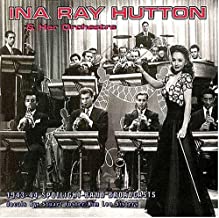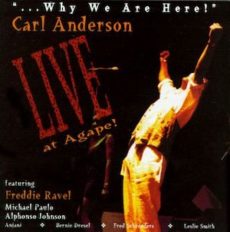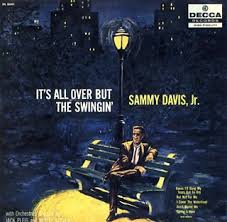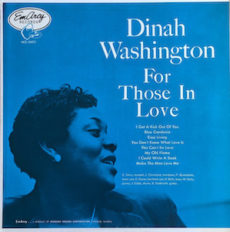
Daily Dose Of Jazz…
Ina Ray Hutton was born Odessa Cowan on March 13, 1916 in Chicago, Illinois into a family whose mother was a pianist. She began dancing and singing on stage professionally at the age of eight. By 15, she starred in the Gus Edwards revue Future Stars Troupe at the Palace Theater, and Lew Leslie’s Clowns in Clover. On Broadway she performed in George White’s revues Melody, Never Had an Education and Scandals, before joining the Ziegfeld Follies.
1934 saw her being approached by Irving Mills and vaudeville agent Alex Hyde to lead an all-girl orchestra, the Melodears. As part of the group’s formation, Mills asked Odessa to change her name. The group included trumpeter Frances Klein, Canadian pianist Ruth Lowe Sandler, saxophonist Jane Cullum, guitarist Marian Gange, trumpeter Mardell “Owen” Winstead, and trombonist Alyse Wells.
The Melodears appeared in short films and in the movie Big Broadcast of 1936. They recorded six songs, sung by Hutton, before disbanding in 1939. Soon after, she started the Ina Ray Hutton Orchestra (with men only) that included George Paxton and Hal Schaefer. The band appeared in the film Ever Since Venus in 1944, recorded for Elite and Okeh, and performed on the radio. After this band broke up, she started another male band a couple years later. During the 1950s, Hutton again led a female big band that played on television and starred on The Ina Ray Hutton Show.
Although she and some members of her family are known to have been white, historians have theorized that she and her family were of mixed white and African-American ancestry. In 1920, Hutton herself was listed in the US Census as “mulatto” and in 1930 as “negro”. Hutton was also mentioned under her original name in the black Chicago newspaper The Chicago Defender several times in articles describing the early years of her career. A photograph of her as a 7-year-old dancer appeared in a 1924 issue of the paper.
Retiring from music in 1968, Ina Ray Hutton, who led one of the first all-female big bands, passed away on February 19, 1984 from complications due to diabetes at the age of 67 in Ventura, California.
More Posts: bandleader,history,instrumental,jazz,music,vocal

Daily Dose Of Jazz…
Carl Anderson was born Carlton Earl Anderson on February 27, 1945 in Lynchburg, Virginia, one of 12 children to James and Alberta Anderson. During his junior year of high school, he enlisted in the U.S. Air Force, where he served as a communications technician for two years. Honorably discharged and returning home he completed high school, graduating in 1965. He went on to sing at military bases across the United States as part of the World Wide Air Force Talent Contest.
Making his way to Washington, D.C. in 1969, he and some friends formed a group called The Second Eagle with Anderson handling the vocals. They covered jazz and rock tunes that included songs from the album Jesus Christ Superstar, released long before the stage production was launched. In 1971, a talent agent from the William Morris Agency saw Anderson perform some songs from the show at St. Stephen’s Church and recognized his potential as a solo performer.
His global popularity and star power came from his role as Judas in Jesus Christ Superstar both on Broadway and in the film. He also had rolesin The Black Pearl, The Color Purple, The Eddie Capra Mysteries, Cop Rock, Days of Our Lives, and Hill Street Blues.
As a recording artist, Carl was equally prolific, initially signing with Motown Records in 1972, working with Stevie Wonder on his Songs in the Key of Life double album, as well as numerous others. While working the club circuit in Los Angeles, California he was noticed by and signed to Columbia Records and released four albums on their Epic label. He would go on to perform duets with Gloria Loring, Angie Bofill, Linda Eder and Nancy Wilson.
His duet with Loring, Friends and Lovers, reached Number 2 on the charts, and endeared Anderson to soap opera fans, after being performed on Days of Our Lives. He also recorded Between You and Me, as the title theme for the film Her Alibi.
In 2003 he had a minor car accident on his way to perform and while being treated for his injuries, doctors discovered that he had leukemia. Soul jazz vocalist and actor Carl Anderson passed away the following year from the illness on February 23, 2004, in Los Angeles, just four days before his 59th birthday.

The Quarantined Jazz Voyager
It’s All Over But The Swingin’ is a studio album by Sammy Davis, Jr. that was recorded on July1~2 and 9~10, 1957 and released the same year on the Decca Record label. The music was arranged by Jack Pleis and Morty Stevens and the session was produced by Lee Gillette.
Track List | 43:13- Guess I’ll Hang My Tears Out To Dry (Sammy Cahn, Jule Styne) ~ 4:43
- But Not for Me (George Gershwin, Ira Gershwin) ~ 3:24
- Where’s That Rainbow? (Lorenz Hart, Richard Rodgers) ~ 3:27
- I Cover the Waterfront (Johnny Green, Edward Heyman) ~ 3:19
- Don’t Blame Me (Dorothy Fields, Jimmy McHugh) ~ 2:52
- Better Luck Next Time (Irving Berlin) ~ 2:43
- Can’t Help Lovin’ Dat Gal (Oscar Hammerstein II, Jerome Kern) ~ 4:53
- It Never Entered My Mind (Hart, Rodgers) ~ 4:05
- Someone to Watch over Me (G. Gershwin, I. Gershwin) ~ 3:23
- I’ve Grown Accustomed to Her Face (Alan Jay Lerner, Frederick Loewe) ~ 2:47
- Spring Is Here” (Hart, Rodgers) ~ 4:03
- I Can’t Get Started” (Vernon Duke, I. Gershwin) ~ 3:29
- Sammy Davis, Jr. – vocal
- Dan Lube, M. Sosson – violin
- Al Dinkin, Paul Robyn – viola
- Eleanor Slatkin – cello
- Harry Klee – flute
- Harry Edison, Conrad Gozzo, Virgil Evans, Mannie Klein – trumpet
- Milt Bernhart, Frank Howard, George Roberts – trombone
- Harry Klein, Ronnie Lang – alto saxophone
- Babe Russin, Don Raffell – tenor saxophone
- Bob Lawson – baritone saxophone
- Roger Renner – piano
- Tony Rizzi, Bob Bain – guitar
- Mort Cobb, Joe Comfort – double bass
- Irving Cottler, Alvin Stoller – drums
More Posts: adventure,album,club,genius,jazz,museum,music,preserving,restaurant,travel,vocal

The Quarantined Jazz Voyager
My social distancing and masks continues amidst the on-going vaccinations. This week the album I’m puting on the turntable is an album from a member of a family who are vocal royalty. The album is a 2018 titled My Mood Is You by Freddy Cole.
Recorded on the HighNote label The album features Cole’s working band. Arrangements are by Randy Napoleon and John DiMartino. This album received a nomination for a Grammy Award for Best Jazz Vocal Album on December 7, 2018.
Track List | 47:08- My Mood Is You ~ 5:47
- Temptation ~ 4:55
- Almost In Love ~ 5:39
- I’ll Always Leave The Door A Little Open ~ 5:45
- First Began ~ 6::21
- The y Didn’t Believe Me ~ 4:34
- My Heart Tells Me ~ 6:32
- The Lonely One ~ 5:12
- Love Like This Can’t Last ~ 4:17
- Marie ~ 3:20
- Freddy Cole ~ piano, vocal
- Randy Napoleon ~ guitar
- Elias Bailey ~ bass
- Quentin Baxter ~ drums
- John DiMartino ~ piano
- Joel Frahm ~ tenor saxophone
This pandemic is here for the long haul. In the meantime, stay vigilant, wear masks and remain healthy and we’ll all be jet setting sooner than we think.
More Posts: adventure,album,club,genius,jazz,museum,music,piano,preserving,restaurant,travel,vocal

Requisites
For Those In Love ~ Dinah Washington | By Eddie Carter
To the singer of jazz ballads, standards, or contemporary hits, a song is comprised of three essential parts, melody, harmony, and rhythm. When all three elements are mixed, and enhanced by great arrangements and musicians, the result is an enriching music experience. This morning’s choice from the library is by Dinah Washington, a vocalist who sang the blues, jazz, pop, and R&B proficiently. The album is For Those In Love (EmArcy MG 36011), recorded and released in 1955. She’s joined on this date by Clark Terry on trumpet, Jimmy Cleveland on trombone, Paul Quinichette on tenor sax, Cecil Payne on baritone sax, Wynton Kelly on piano, Barry Galbraith on guitar, Keter Betts on bass, and Jimmy Cobb on drums. The arrangements are by Quincy Jones and my copy used in this report is the second 1955 US Mono release featuring the silver Mercury Records oval at the noon position of the label with EmArcy Jazz appearing in the bottom of the oval.
The opener is I Get a Kick Out of You, written by Cole Porter for the 1934 Broadway musical, Anything Goes, and the octet gets right to work on this swinger. Dinah has the spotlight first and gives a splendidly entertaining improvisation. Jimmy follows, having a ball on a spirited statement, then Kelly displays impeccable chops on a relaxed reading. Clark comes in for some savory swinging with a mute on the closing solo, and Dinah handles the finale with great effectiveness leading the group into a slow fade. Blue Gardenia by Lester Lee and Bob Russell was composed for the 1953 crime drama, The Blue Gardenia. It became a signature song for Dinah and the octet offers a supporting role behind her delicately subtle narrative. Quinichette gives a brief statement of tenderness, then Galbraith offers a solo of soft tranquility. Payne has a moment in the spotlight adding a dreamlike softness to the closing solo. Dinah wraps up the song with emotional sensitivity on the climax.
Easy Living by Ralph Rainger and Leo Robin was the main theme of the 1937 comedy of the same name. The group provides a perfect complement to Dinah’s luxurious vocals on the opening chorus, and the solo order is Paul, Clark, and Jimmy. The first two readings are like delicate porcelain figurines, perfectly proportioned and translucent. The pace picks up slightly for the trombonist who plays the next interpretation with sensual beauty. Ms. Washington is especially attractive on the reprise with a velvety, smooth timbre in her voice that’s gorgeous. You Don’t Know What Love Is by Gene de Paul and Don Raye is a perfect song for film-noir. The haunting lyrics describe the hurt and sadness at the end of a love affair. It opens with a solemn introduction by Dinah and Galbraith. She captures the subtle pathos of the song with the octet’s soft supplement. Cleveland provides the song’s only solo with a graceful and elegant interpretation before Dinah returns to the melancholy mood of the beginning.
This Can’t Be Love by Richard Rodgers and Lorenz Hart was written in 1938 and featured in the Broadway musical, The Boys From Syracuse. The mood is jubilant, and Dinah rises to the occasion with a vivacious vocal treatment. Clark’s muted trumpet sets a lively mood on the first solo. Cecil is up next with an energetic performance of his own. Jimmy mines a vein of unsuspected riches on the third statement, then Paul delivers a delightful interpretation. Kelly cooks up a mesmerizing musical brew before Dinah sings the closing chorus. My Old Flame by Arthur Johnston and Sam Coslow made its debut in the 1934 film, Belle of The Nineties. Dinah begins this tune as a duet with Galbraith preceding the rhythm section’s slow-tempo theme. She’s the dominant presence here and presides with authority, as she recounts her lost love some time ago in a reflective flashback. The horns make their presence known for the closing chorus with Dinah giving it the recognition it deserves.
The 1940 show tune by Rodgers and Hart, I Could Write A Book gets taken for a mid~tempo spin by Ms. Washington and the ensemble. The octet starts the song in unison for the introduction, then Dinah treats the listener to an effervescent vocal performance on the melody. Paul starts with a passionately playful lead solo. Terry adds some fire on the muted trumpet, then Cleveland ends the solos on an upbeat note. The album’s finale, Make The Man Love Me is by Arthur Schwartz and Dorothy Fields. Quinichette opens with a seductive introduction, then Dinah makes a passionate romantic plea with the lyrics. Paul takes the lead with a remarkably graceful solo, then Terry turns in a beguilingly beautiful statement. Kelly approaches the next performance with affective empathy and Cleveland soothes the soul on the closer. Dinah sings two verses of the Duke Ellington–Paul Francis Webster classic, I Got It Bad (and That Ain’t Good) before returning to the original lyrics for the coda.
It’s a solid summation to an album sparkling with marvelous music, exciting, evocative solos, excellent arrangements, and the extraordinary vocals by Dinah Washington that are exceptionally presented. She brought the lyrics she sang to life in each song. The Queen of The Blues, a title she gave herself, recorded a total of thirty-three LP’s for EmArcy, Mercury, and Roulette during her short recording career that began in 1952 and lasted only eleven years. Though her greatest hit, What a Difference a Day Makes came four years later in 1959, For Those In Love would become one of the strongest albums of her career. Dinah passed away from a drug overdose on February 14, 1963, at the age of thirty-nine. This is a gorgeous recording with a splendid soundstage that’ll take your breath away each time you listen. I found For Those In Love to be thoroughly enjoyable and recommend it as a wonderful starting point for any fan interested in exploring the music of Dinah Washington. After one audition, I’m sure you will too! ~ What a Difference a Day Makes (Mercury MG 20479/SR-60158) – Source: Discogs.com
~ I Get a Kick Out of You, Easy Living, My Old Flame, I Could Write a Book, I Got It Bad (and That Ain’t Good) – Source: JazzStandards.com ~ Blue Gardenia, Dinah Washington, Make The Man Love Me – Source: Wikipedia.org © 2021 by Edward Thomas
More Posts: choice,classic,collectible,collector,history,instrumental,jazz,music,vocal




